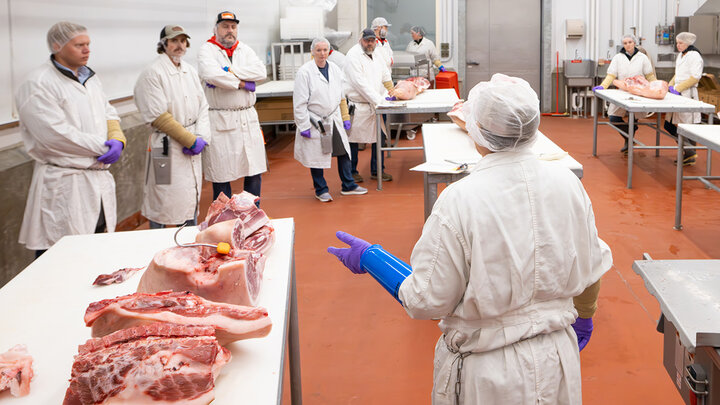There are some farm families where the children want nothing to do with the operation after they graduate from high school or college. Other family operations struggle to find a place for all the children that desire to come back to the farm. What does it really take to financially employ another family member on the operation? Though it varies widely, it is fairly easy to determine the salary and even the benefits another family member will need. For example, assuming an annual salary of $35,000, the total cost could look something like:
| Salary | $35,000 |
| Employer portion of Social Security (6.2%) | $2,170 |
| Employer portion of Medicare (1.45%) | $508 |
| Farm portion of health insurance | $6,000 |
| House and utilities | $24,000 |
| Pickup and fuel | $8,100 |
| Other perquisites (i.e., locker beef) | $1,000 |
| Total: | $76,778 |
*These are not suggested nor typical costs but only an example for illustrative purposes.
So, if $76,778 is the amount of cash flow and ownership costs that need to be generated, how much additional gross income will need to be created by the farm to meet these annual expenditures? According to the Nebraska Farm Business, Inc. 2020 average farm financial data (nfbi.net) the average gross farm income earned by Nebraska farmers was $1,286,983 with a corresponding net farm income of $209,521. Thus, it took $6.14 in gross income to equal $1 of net income. If you go back to 2018 when the farm economy was bit leaner, it took $12.54 in gross income to equal $1 of net income. In 2020, $471,414 ($76,778/6.14) in additional gross income would be required to cover the $71,838 needed to bring a family member back to the farm. In 2018, $962,790 in additional gross income would have been needed.
A few other factors that should be considered when bringing a son or daughter back to the farm include:
- What value does the family member bring to the operation? Will they come back as a laborer or do they bring skills in financial management, marketing, etc. that can be used to create additional value to the operation? You will need to clearly define the role they will assume.
- Should the son or daughter be required to work off-farm for a few years to gain additional skills and to experience and to appreciate what it is like to work full-time for someone other than family.
- Make certain a transitioning plan is in place if the long-range goal is for your child to take over the management of the operation and/or become the successor. Perhaps a lower wage could be justified if it is clearly stated that sweat equity will be created by their labor (i.e., they will receive a larger share of the inheritance than their non-farm siblings).
- If your child is to assume the management of the operation in the future, design a path for them to gain the management experience they will need to be successful. Perhaps they could gain experience by being responsible to market a certain percentage of the commodities produced. Or they could be assigned management of an enterprise or a certain percentage of the acreage.
- Too often family harmony is disrupted when operating procedures are not clearly stated. Make the effort to develop some standard operating procedures before they are brought back home, especially if more than one child is on the farm and both have families of their own.
While most farmers and ranchers would love to have their children continue their farming legacy, far too often our failure to plan for that event and bring our children back to the operation in a manner to optimize the success of that transition could use improvement. Assessing the resources required to bring a child back to the operation, having a management transitioning plan in place from the beginning, and having quality communication can help increase the success of the transition.




